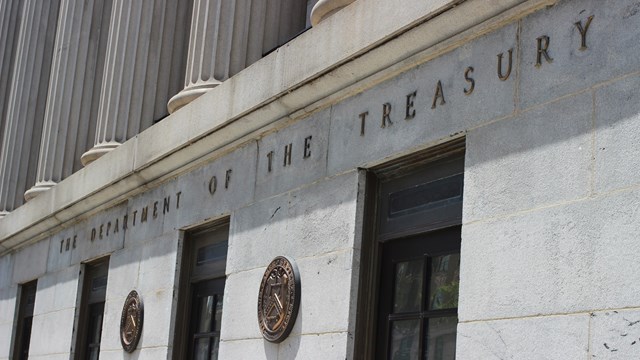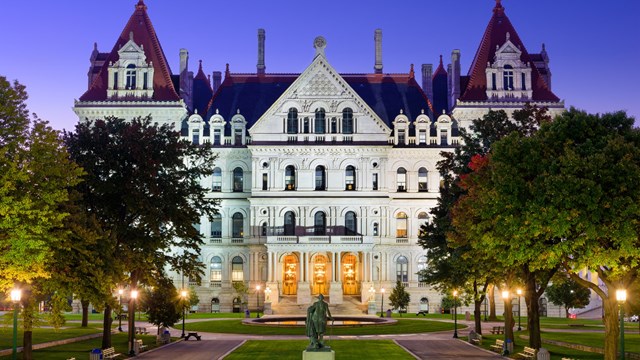After what seemed like years, the wrangling over the proposed West Side Stadium in Manhattan and the city’s bid for the 2012 Olympics is over. A new stadium will now be built in Queens, not Manhattan; New York wasn’t chosen for the Olympics in 2012; the Jets, sans Chad Pennington, are still in New Jersey; Chelsea residents like this reporter no longer get “No Stadium!” flyers under our doors, and opponents of Mayor Michael R. Bloomberg must now find new issues to fight over.
Whatever one’s opinion of the doomed stadium project—and of the somewhat less-controversial Hudson Yards plan for developing the surrounding area—the Far West Side of Manhattan, encompassing streets in the upper 20s, the 30s, and the lower 40s clearly needs something. The area is dominated by three huge open-air sites used by the Long Island Railroad: one in the lower West 30s between 9th and 10th Avenues which contains switching tracks leading into Penn Station; one between 10th and 11th Avenues that’s called the East Rail Yards; and one more between 11th and 12th Avenues called the West Rail Yards. All three are sunk below street level, and none have anything built on or near them.
A walk around the immediate neighborhood finds bus and taxi garages, parking lots, and a few industrial facilities such as UPS warehouses and the like, interrupted only by the Jacob K. Javits Center, the city heliport, and a few diners and nightclubs. All in all, it seems tailor-made for development. But what, exactly?
That’s the question that remains now that the stadium idea has been defeated. The overall Hudson Yards plan has been approved, according to Councilwoman Gale Brewer, D-6, who represents Manhattan’s Upper West Side/Clinton, but part of the idea—a greenway that would have led up to the proposed stadium—must now be reconfigured. The project’s intent, according to the city’s Department of City Planning, is to transform the area so that medium- to high-density development is permitted, and a mix of uses, including commercial, residential, open space, cultural and entertainment activities, are provided. The plan would also include creating a convention center and extending the No. 7 subway line.
As far as plans for the rail yards themselves, things are less concrete. One plan, devised by the Newman Real Estate Institute at Baruch College, would build a new convention center over both the East and West Rail Yards between 10th to 12th Avenues, from 30th to 34th Streets. Unlike the Javits Center, the plan would not wall off the waterfront—a key complaint with the stadium proposal—and would give the state the impetus to knock down the too-small Javits Center and sell the property. Doug Turetsky, chief of staff at the city’s Independent Budget Office says, “You constantly hear that the Javits Center is too small, that it can’t compete for many of the conventions.”
In 2004, the Hell’s Kitchen Neighborhood Association proposed an alternative to the stadium plan that would have decked over the rail yards with a public park, built up commercial and residential development, and expanded the Javits Center southward. According to the association, the plan would have “improved the city’s Olympic chances by putting a stadium in a less controversial location.” Rather than the more expensive No. 7 subway line extension, the association proposed a one-stop subway along 34th Street to 11th Avenue using existing railroad right-of-way.
And what about the plan that entertainment giant Cablevision put forth during the final weeks before the stadium bit the dust? In the early part of 2005, when the stadium/multi-use facility plan was still very much in the running, Cablevision—which owns Madison Square Garden—submitted a competing bid against the Jets for the rail yards property. Cablevision’s plan was described by the New York Daily News as being similar to Battery Park City, with a mix of residential and commercial development. An article in the June 8, 2005 New York Times said the company is still pursuing its proposal for the West Side, but since then, little has been heard from them.
The city’s plans for the site, according to Rachaele Raynoff, the spokesperson for the Department of City Planning, include “finding a use for the Western Rail Yards that will create the most value, make best use of the site’s size, and jump-start economic development in the area—all of which we believe the sports and convention center would have done.”
On an overall vision for the Far West Side, people disagree, as always. Raynoff notes that there is a fundamental difference between the Hudson Yards area and nearby residential areas such as West Chelsea and the Village. Hudson Yards is surrounded by commercial and light industrial buildings, and hemmed in on all sides by busy streets and the West Side Highway, which perhaps makes it more of a development challenge than the more attractive, accessible neighborhoods further uptown or downtown.
Whatever the final plan, a few things need to be worked out on the West Side before real development—both residential and commercial—can become a reality. Transportation is a major factor, for example. Among those who believe that the planned extension of the No. 7 subway line is essential to spur future development are Turetsky and Anna Levin, chair of the Land Use Committee of Community Board 4.
According to Levin, sinking several blocks’ worth of new subway line “is a very expensive way of getting people out to 34th Street and 11th Avenue. We would support a less expensive extension with light rail or monorail.”
Levin does, however, agree with the Hudson Yards’ plan for a block-long bus garage to replace the current outdoor lot, and adds that, “Getting the [not-in-service] buses off the city streets is critical.”
“The Far West Side is conceived as of an extension of Midtown,” Levin continues, elaborating that the Hudson Yards plan calls for 24 million square feet of commercial space, 13,000 units of housing—including a substantial component of affordable housing—and more than 20 acres of open space.
What would the anti-stadium grassroots activists of Clinton, Chelsea and other nearby areas like to see now on the rail yards sites? “We need a comprehensive plan for the east and west rail yards—they should be developed together,” says Levin. “It should be high-density residential, developed in an east-west direction to connect to the Penn Station transit hub, and has to have a lot of open space to link to the waterfront.”
But what was it about the stadium plan that so divided the city government and neighborhood groups? Why wasn’t the promise of jobs and city development dollars enough to make the Jets stadium a reality? Critics of the proposal claimed from the start that not only would the stadium/event arena not deliver on its promise of generating jobs and attracting affordable housing, but that it would further congest an area already troubled by traffic flow problems, and lower the quality of life for people living in the Hell’s Kitchen/West Chelsea neighborhood—despite claims by the Hudson Yards project developers.
“The stadium,” says Levin, “would have been a 300-foot-tall, four-block-long, barricade to the waterfront. It would have a capacity of 75,000 people—imagine 75,000 people trying to come and leave from a football game. We would have had gridlock from the Battery to the George Washington Bridge.”
Brewer agrees, and expands the roster of issues raised by West Siders and their representatives. “There was always a concern about the traffic, concern about sewage and solid waste, about whether there would be enough affordable housing, enough parkland, enough access to the waterfront,” says Brewer, whose district is to the north of the one that would have contained the facility. Her neighbor to the south, Councilwoman Christine Quinn, was also fervently anti-stadium.
The initial claims of jobs and revenue also found detractors. In a July 2004 report, the city’s own Independent Budget Office found that “The facility would create 3.586 jobs—barely half the 6.971 claimed by the project’s proponents—and generate $28.4 million in new city tax revenue annually, $6.7 million less than what the project’s supporters’ expect.”
As for the economic benefits, “The value of goods and services purchased by visitors at the facility and elsewhere in the city during their stay would be $306 million; the Jets estimated $411 million.”
And the Answer is…`No’
In the end, however, it wasn’t sheerly the objections of neighborhood groups and their representatives that toppled the West Side stadium project—and it wasn’t the city’s waning shot at getting the 2012 Olympic Games. As it turned out, it was a small legislative board that threw the brakes on the plan and effectively ended the debate, at least for a little while.
Although the stadium facility didn’t have to go through the city’s land review process, it did have to go through the little-known state Public Authorities Control Board. And in early June, two of the board’s three members, Assembly Speaker Sheldon Silver and Senate Majority Leader Joseph Bruno, abstained in a vote to approve the plan, which needed unanimous approval. Silver balked at giving $300 million in public funding for the stadium because he felt it would undermine plans to redevelop Lower Manhattan.
One of the main concerns that may have helped squelch the proposal, many observers agree, was a concern over the use of PILOTS (short for “payments in lieu of taxes”) for the project, which were perceived as not being transparent enough. Another may have been the charge that the MTA wasn’t getting full value for its Rail Yards property, whose value was appraised at $900 million. (According to new reports at the time, the Jets would have paid only $250 million up-front, although the city and state would have kicked $300 million each.)
While the debate was tabled, questions still flew fast and furious: Was the entire West Side proposal and Olympic bid just a sweetheart deal hatched in order to make piles of money for City Hall buddies? Would the stadium really have caused all the traffic and quality-of-life woes the anti-stadium activists thought it would? Was the loss of a Manhattan sports and events facility the main factor in the city’s loss of the 2012 Olympics bid?
Regardless of one’s own personal thoughts on the matter, one thing remains certain: as one of the last, very few areas of Manhattan that are not entirely built-up and saturated by development and real estate marketing, the West Side of Midtown and the Hudson Rail Yards will be a hotly-contended neighborhood for many years to come.







Leave a Comment